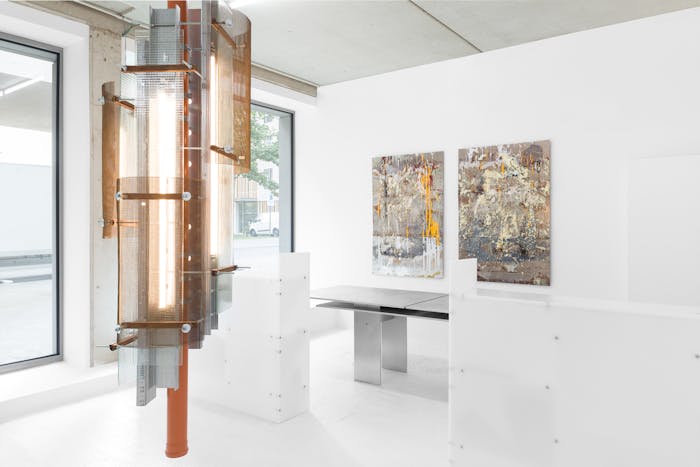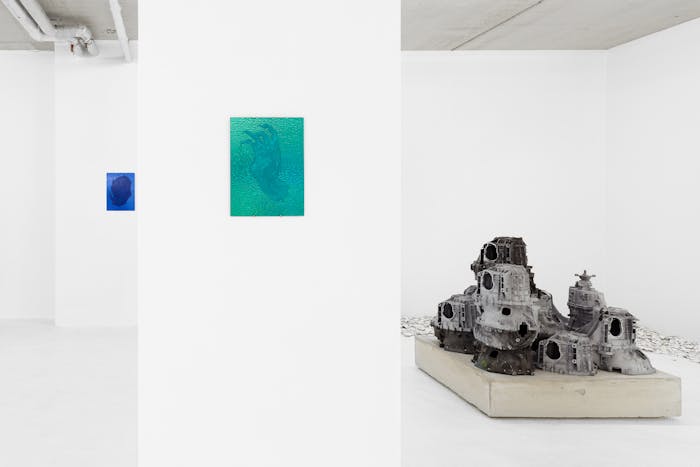Human Nature: an exhibition with the same name as the sugary global hit by arguably the most artificial entertainer in the music industry: Michael Jackson. The lyrics are about the irrepressible desire to take advantage of opportunities for promiscuity offered by metropolises—what can poor Michael do about it? Why blame anything on him? “It’s human nature”. Only to realize that the lust is actually directed toward the architectural libidinal theatre—“Looking out / across the morning / The city’s heart begins to beat / Reaching out / I touch her shoulder / I’m dreaming of the street”. The actual goal, in other words, is not the liaison we thought we wished for, but rather access to the preconditions for a multitude of possible stories. Analogously, the pressing ecological issues that the contemporary art world has been frantically signalling for the last decade—whether through international biennials or thematic institutional shows—seems an attempt to test the visual arts’ fluency in political debates, and the featured works tend to hyper-anthropomorphize the environment, casting it as a repository for dysphoric fictional scenarios.
Human Nature is certainly enamoured with the many narrative opportunities of a city disfigured beyond recognition at some unspecified point in the future. But it’s not a unified vision—more of a swirling look, a composite montage of blinks, as in Giovanni Battista Piranesi’s visionary, fantastic depictions of ruins. Xavier Mary’s Chakra #3 (35/65R33) (2020) exercises a post-rave minimalistic aesthetics with a bulky tire as a shaped canvas containing a simple light animation that looks like an assemblage fetishized by a possible humanity from a blurred, remote future. Mary’s Model of Jeremy Rifkin’s Biospheric City (Ta Keo) (1.44m²) (2020) references one of the most outspoken public figures on the topic of much-needed radical change in our relationship with the planet’s ecosystem. The work, ironically, is an inhospitable-looking fortress built from various pieces of an engine, evoking a hybridized readymade, or a sculpture to adorn an illegal techno party, or a fetishized, futuristic means of transportation styled in a strange Californian variant of minimalism.
Mirko Canesi’s Verdant (2019) is an imposing panel reproducing a still from a vintage action platform game, which comes across as a retro-futuristic short-circuit between cave painting, sacred art, and video-ludic world building. The approximation to sacred art continues in the three works from Canesi’s Bouquet series (2021-). Details of demonic bodies—or at least monstrously nonhuman bodies—are elegantly painted in oil on variously coloured glass. There seems to be a polarity, even a temporal one, between the first works one encounters—Ciro Duclos’s Mold Paintings (2021), behind the counter—and the work on the final wall––Estrid Luz’s magmas kisses flowwwwws over artificial dicks (2021): we go from Duclos’s violently material interpretation of Abstract Expressionism in which concrete, foam, wax, and plaster are deposited on metal, like a glimpse stolen from the city, to Luz’s iridescent, cosmic-psychedelic portrait of digital-native organisms.
Marc Leschelier’s remarkable Aprons With Spillers (2021), succeeds in evoking the fascinating image of a wall structure realized by its foundational bricks autonomously, following a symmetrical pattern. Janne Schimmel contributes Phantasmic Crystal Interface (2020) and Phantasmic Gateways and Their Housings (2021), two electronic game stations in which hardware parts are exposed to view and interface elements decorated as if taken from a fantasy film. We can take the controls and lead a muscular, primordial-looking creature into a virtual forest or (among other things) move it around inside domestic walls. Schimmel, too, opts for a complex mise-en-abyme that squeezes the atavistic and the futuristic into the present moment. This imagined future is adverse to humans, but its ornamentation and ways of spending leisure time are strikingly familiar. Quieter, but exquisite in its masterful composition and use of materials, is Utility Shaft (2020), the illuminating monolith by Arnaud Eubelen, who works between sculpture and design.
Human Nature is a finely executed exhibition full of visual information and intriguing interrelationships among the works on display. Its builds what we might call a speculative fiction narrative, interpolating very individual registers and styles. It is interesting to note how the idea of a primitive future is constituted as a founding element of a “setting” rather than, as happens on more institutional occasions, as a cue for programmatic considerations.



